How to Setup Your Restaurant with a Fresh New Salad Bar
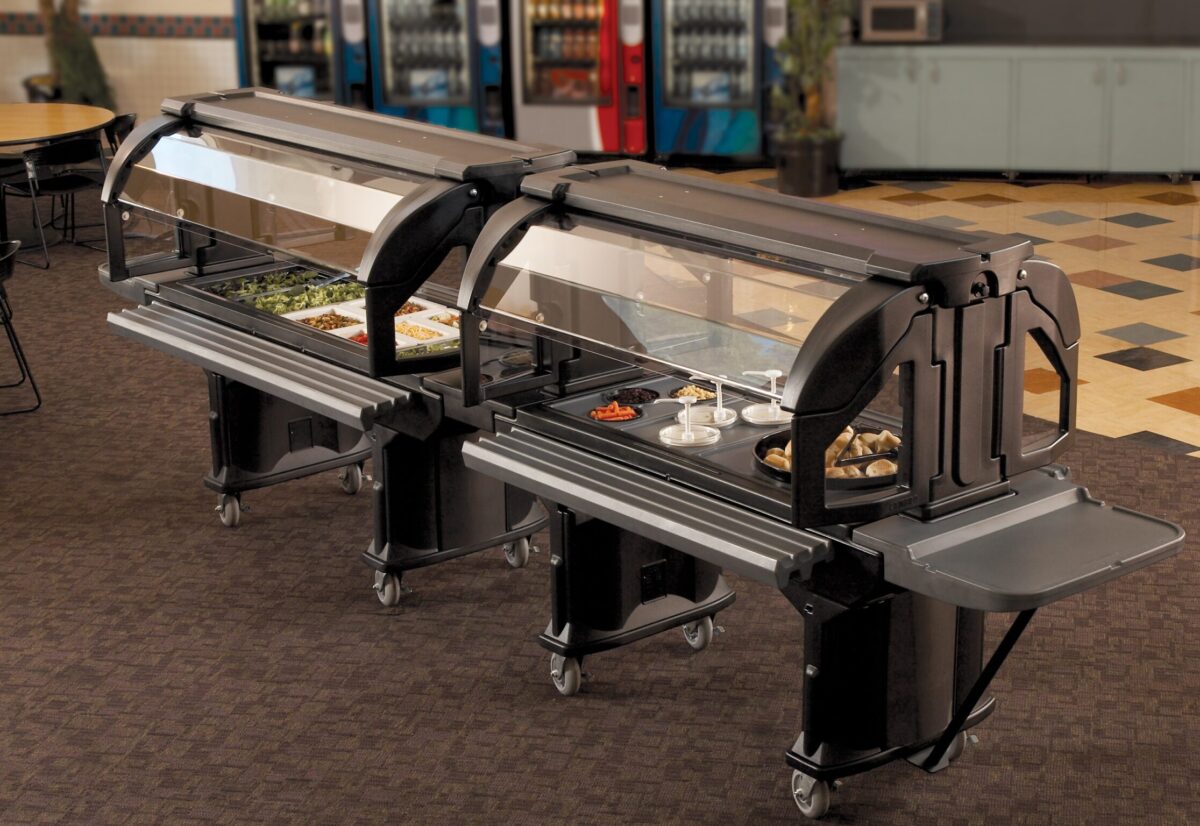
Salad bars. We all know and love them. But did you know they became popular in restaurants in the 1950s and early 1960s? Though they largely fell out of fashion in recent decades, the all-American tradition seems to be making a comeback, baby! Salad bars have evolved from the steakhouse-style self-serve salad bar and are now often presented as a fresh and healthy food option that offers an array of higher-end or less common ingredients for customers to choose from.
Nothing Beets A Sneeze Guard: Understanding Food Safety Regulations
While specific health and safety codes vary from state to state, the FDA mandates certain practices nationwide. These include storing meats and fresh produce separately, cleaning and sanitizing cutting boards and prep utensils regularly, discarding contaminating food, and, most importantly, preventing harmful bacterial growth.
Most salad bars include raw produce, eggs, salad dressings, and dairy, which are susceptible to bacterial growth. Because these foods are set out for long periods, following strict health and safety guidelines is crucial to avoid spreading foodborne illnesses/food poisoning and keep those customers returning for more.
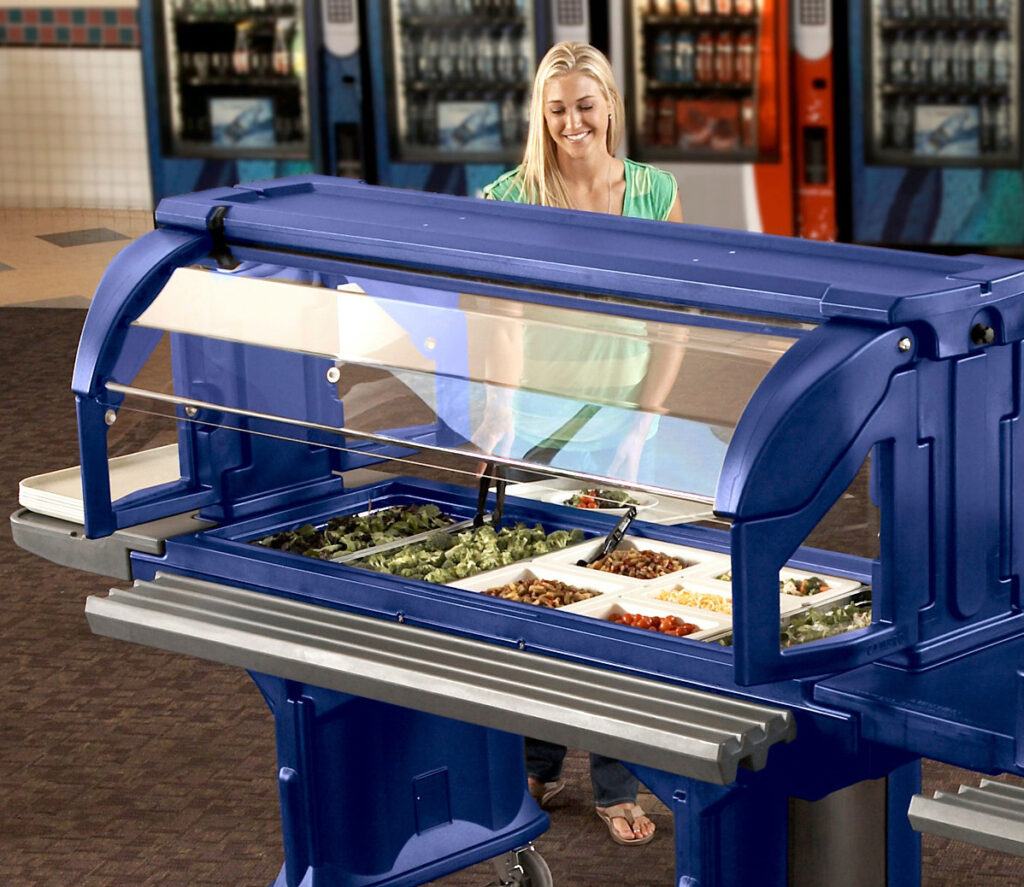
Temperature Control: Keep Cool and Carry On
Bacteria like salmonella, listeria, and E. coli grow quickly on fresh produce and can cause serious illnesses. Since bacteria replicate easily and readily in temperatures between 41° and 135° Fahrenheit, the FDA requires that salad bars keep their fresh produce at or below 41° F to prevent bacterial growth.
Any foods that have not been temperature-controlled must be thrown out after four hours. Cold foods that have been kept below 70° have six hours before they are no longer safe for consumption.
Because of these strict time and temperature regulations, your staff needs to monitor the salad bar regularly to check the temperature, pick up any dropped food items or contaminated utensils, and clean up any spills as soon as they happen.
Turnip Your Hygiene and Sanitation Awareness
To maintain sanitary kitchen conditions, all staff should always follow good handwashing techniques and personal hygiene. They should not come in to work when sick and should always wear single-use gloves when handling any food item.
In addition, all utensils and containers used for salad bar service should be rinsed, cleaned, rinsed again, and then sanitized in a high-temperature warewasher or with chemical sanitizers between meal services and after shifts. All salad bar surfaces should be cleaned with chemical sanitizers between meal services.
Weed Out Cross-Contamination
Because of the variety of raw and temperature-sensitive foods that are on display together in most salad bars, cross-contamination prevention is critical to ensuring safe food conditions.

Here is a checklist you can follow to help prevent cross-contamination at your restaurant salad bar:
- Use separate cutting boards for different ingredients.
- Immediately remove food particles or serving utensils that have been put into the wrong food containers.
- Remove food containers that have been contaminated by food or serving utensils from other containers.
- Ensure that staff have washed their hands thoroughly before prepping different ingredients or after handling raw meat, poultry, Dairy, or fish.
- Clean all knives, cutting surfaces, and food containers with hot, soapy water and sanitize them after each use.
- Never reuse food containers, packaging, or storage bags that have held raw or old meats or produce.
- Separate meats, poultry, fish, and raw produce in separate bags when shopping.
- Store raw produce whole and uncut/unpeeled whenever possible.
Keeping a Salad Bar Fresh is the Tip of the Iceberg
Produce with blemishes or bruises and produce grown in chemical fertilizers have the highest risk of harmful bacterial growth. Therefore, sourcing your produce from trusted, high-quality growers is always a good idea. This helps with quality consistency and gives you peace of mind that your food is local, un-contaminated, and healthy.
Standard operating procedures dictate that at the end of each day, all food in the fresh salad bar should be discarded and replaced with fresh food the next day. If food display containers get contaminated during meal service, replace them with new containers and fresh food.
That’s a lot of cycling through food! To maintain this constant rotation, small amounts of prepped ingredients should always be stored in fresh containers in a walk-in cooler or refrigerator.
Lettuce Talk About Storage and Preserving Food
- Airtight Containers: Using airtight containers helps maintain the freshness and quality of your produce. By blocking moisture and airflow, they delay oxidation, aging, wilting, and spoiling.
- Refrigerated Salad Bars: There are a variety of fresh salad bar options to choose from. Refrigerated salad bars, which are the most common salad bar setup, work by utilizing an in-unit refrigeration system. This keeps the display trays at a constant temperature. They also usually have built-in sneeze guards above the display trays and coolers with storage below. Alternatively, you could display your salad bar items over ice or on portable cold tables that can be plugged in and placed on any table.
- Vacuum Sealers: Similar to airtight containers, vacuum sealers are food preservation on overdrive. By removing all excess air and moisture, they preserve your food longer and take it one step further by allowing you to freeze your items without worrying about freezer burn.
What Kitchen Tools Will I Need to Set Up a Salad Bar?
You’ll want to make sure you have the right tools to safely process and serve each different type of food item in your salad bar.
Here is a list of standard tools you may need:
- Green Base Selection: salad spinners and dryers, airtight containers, salad prep table, chopping boards, chef’s knives, salad bowls, salad tongs, and cold display table.
- Vegetable Offerings: chopping boards, chef’s knives, airtight containers, food processors/choppers, vegetable peelers, cold display table.
- Protein Options: Separate cutting boards, cleavers or chef’s knives, airtight or vacuum-sealed containers, food processors, cold display tables for cold cuts, and heating lamps/heated buffet tables for hot items.
- Cheese and Dairy: cutting boards, cheese knives, cheese display plates/charcuterie boards that can be placed over ice, insulated milk/cream pitchers with waterproof seal tops, airtight containers, plastic wrap, and breathable cheese wrap. (Soft cheeses like feta cheese and blue cheese should always be displayed and stored separately.)
- Nutritional Additions: Nuts, seeds, raisins, and other small salad toppers can be kept in bowls or small glass carafes with airtight storage lids.
- Salad Dressings and Condiments: Salad dressing bottles or small glass carafes with airtight storage lids that can be kept in a cold bin or partially submerged in ice.
- Fruit and Sweet Additions: Display plates that can be placed over ice, cold display tables, cutting boards, chef’s knives, peeling/paring knives, and peelers. While some whole fresh fruit can be kept at room temperature, cut fruit/fruit salads should be stored in airtight containers.
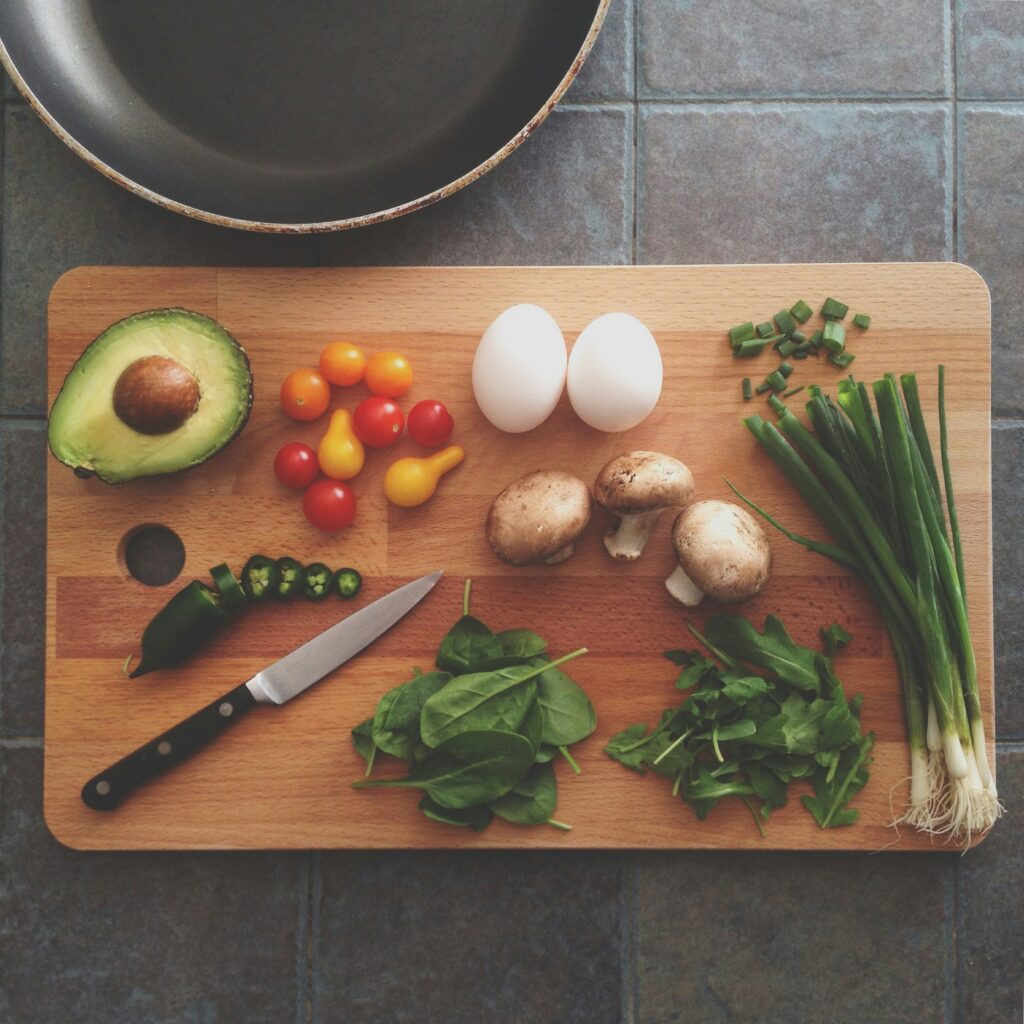
Romaine Alert: Food Allergens Considerations and Accommodations
- Labeling and Information: All displayed foods must be accurately labeled to identify allergens and potential for cross-contamination.
- Separate Stations: Because of the severe nature of food allergens, gluten-free, dairy-free, or nut-free selections should be kept in separate stations or display cases to prevent cross-contamination.
What Could Go Wrong?
Some common challenges faced by restaurant staff running salad bars include knowing how much food to display and prep to minimize food waste, spill and contamination prevention, and proper labeling.
The best way to overcome these challenges is to monitor your salad bar and customers carefully. Conducting thorough market research and watching your customers will allow you to identify customer demand and see how they handle the serving utensils and food to determine which items they are most likely to spill. Knowing this information will help you set up your salad bar with the spillable items in the front. You will also know which items to stock up on and which to ditch.
Crisp Ideas for Salad Bar Success
A salad bar adds freshness, variety, flavor, and color to your restaurant, so you want to ensure a new salad bar is set up right, maintained, and a hit with customers. Here are some key tips for making sure you’re setting up your restaurant salad bar for success.
Dressing Up Your Display!
- Vegetable Peelers and Zesters: Not only is fresh produce delicious and healthy, but it’s also an art form! The more visually appealing your display, the more inviting it will look. Using vegetable peelers and zesters to create artistic garnishes will take your salad bar to the next level and keep your customers returning for more.
- Herb Strippers: Using herb strippers to pull the delicate herb leaves off their stems will elevate your display’s appearance and prevent the bitter and woody stems from throwing off your flavors and textures.
- Plating Tools: When plating your masterpieces, don’t forget to use tweezers, offset spatulas, and ring molds to create elegant salads that look finessed and gourmet.
Make a Statement with Your Salads
- Artistic Presentation: Use salad bowls to create artistically arranged and visually enticing salads ahead of time. Well-presented salads look much more delicious than a pile of lettuce greens.
- Colorful and Textural Contrast: By combining a variety of fresh fruit, vegetable, nut, and protein options with different colors, textures, and flavors, you can create nutritionally balanced and visually attractive displays that will be hard to pass up!
Food Safety for the Modern Age
In recent times, there have been several technological innovations that can help you maintain a safe and healthy salad bar. These include laser/infrared thermometers, remote-controllable food shields and hoods, and buffet tables that digitally track temperature, spoilage, refill needs, and food re-ordering schedules.
Seasonal and Special Offerings
- Seasonal Variations: One great way to keep your customers excited and happy to visit is to rotate your salad bar’s menu options with seasonal fresh ingredients and local produce.
- Weekly or Daily Specials: You can also keep your menu items interesting and fresh by rotating specials every day or every week. Using a smart strategy can also help you use any leftover prepped ingredients from earlier in the week in a creative way that helps minimize food waste.
Taking Your Palate Around the World
- International Salad Flavors: Because salad bars are becoming a trend in the health-driven global consumer space, incorporating menu items and flavors from around the world will help your salad bar stand out from the crowd.
- Fusion Offerings: The beautiful thing about incorporating global flavors into your salad bar is that the potential for unique flavor combinations, fusion dishes/specials, and creativity is nearly endless!
Interactive Chef Demonstrations
- Live Cooking Stations: Don’t underestimate the nostalgia factor of live cooking stations. Who doesn’t love a stir-fry bar, omelet station, or prime rib board? Switch up your freshly cooked salad bar items to keep things exciting and interesting.
- Educational Sessions: Having live chefs working your salad bar stations comes with another advantage; it means you can offer your patrons an educational, interactive, and unique experience. You can also dial it up a notch by providing formal demonstrations, classes, and tutorials!
If You Build It, They Will Come: Choosing the Right Equipment
So, you’re finally ready to buy equipment and set up your salad bar. Here are some factors to consider as you shop around:
- Storage: Is your kitchen running short on storage? If so, buying a salad bar buffet table with built-in cold storage underneath might be a good option.
- Space: Do you have a perfect location for a permanent salad bar station in your dining room? If so, good news! A full stationary salad bar table will be a great investment. If not, consider a tabletop salad bar with drop-in food pans that can be moved around and quickly taken down when you need your space back.
- Size: Do you run a high-volume hotel kitchen or a small brunch cafe? How many ingredients do you want in your salad bar, and how often do you want to serve them? Knowing the answers to these questions will help you select the most appropriate salad bar size.
- Selection: Will most of your salad bar offerings be fresh ingredients? Or will you offer hot items, live cooking stations, or desserts? If most of your items are fresh, cold produce, you’ll probably want a cold display table. If you offer a variety, having a versatile table with some space for cold storage or ice trays in addition to hot wells will be a better bet.
- Sorting: Depending on the number of items you want to display, you’ll want to choose either a salad station with fixed-position food pans or a table with a tile system that can be arranged in many different orientations so you can organize your ingredients any way you want.
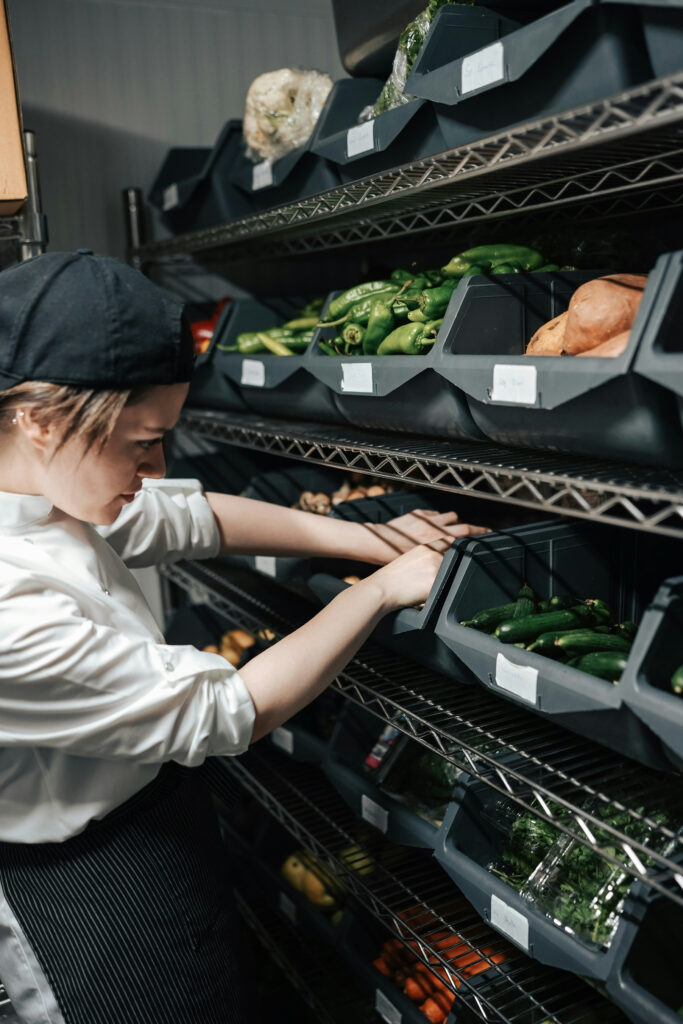
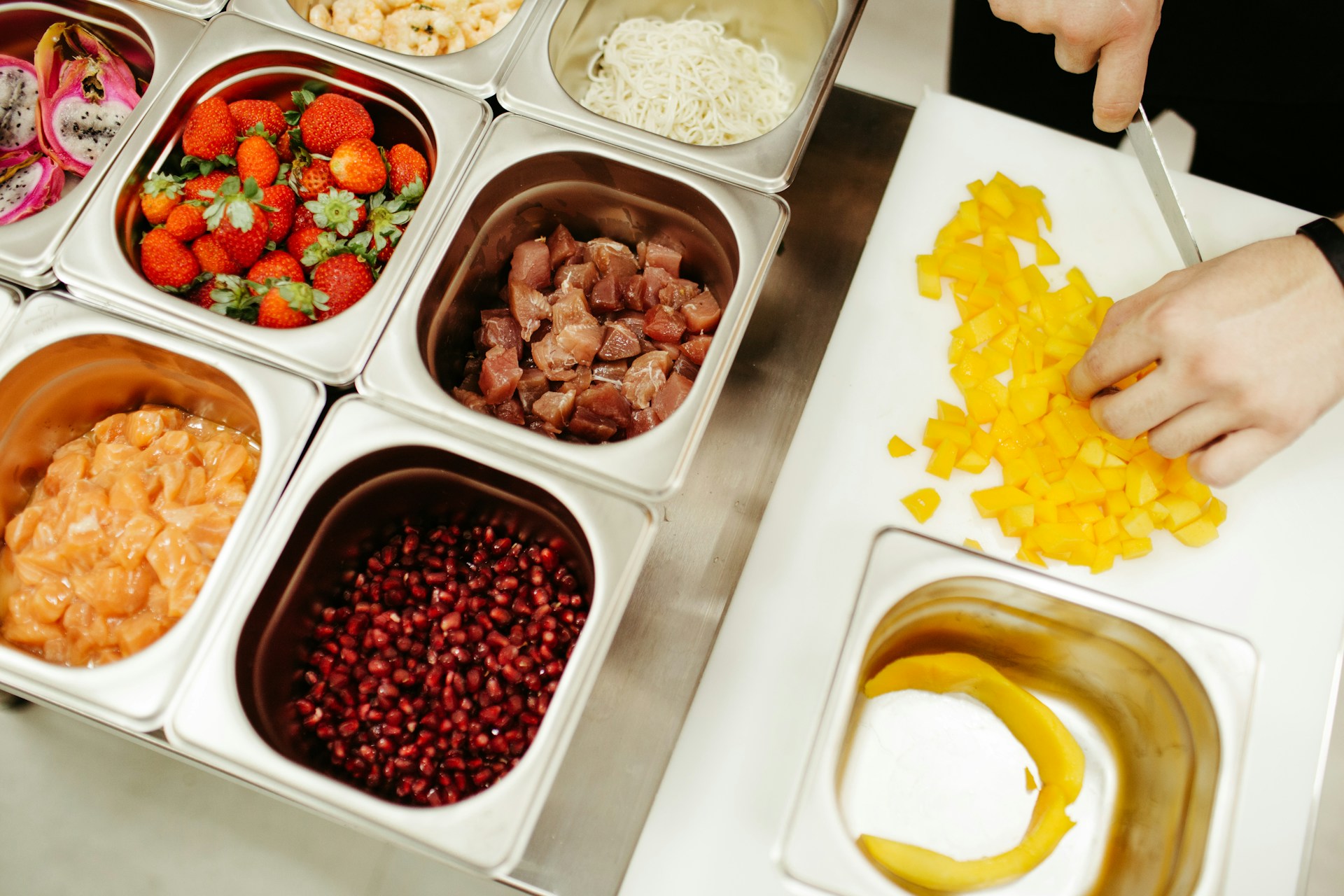
Salad Bar Wrap Up
When in doubt, opting for the equipment with the most variety, options, and features is always the best idea. While commercial equipment like salad bar display tables and cold bar systems might not come cheap, at Eleven36, we believe investing in the best tools to keep your customers safe and happy is always worth it! That’s why we offer top-of-the-line salad bar tables and displays with a large variety of options and configurations to meet your unique restaurant needs.
